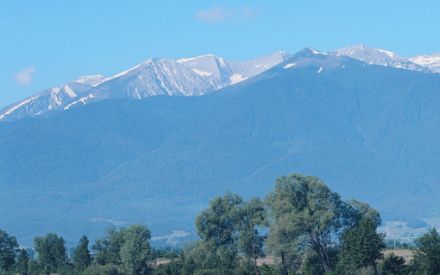
Pirin National Park is one of the three national parks in Bulgaria. It takes most of Pirin Mountain, the second highest in Bulgaria. The total territory of the park is 40 332,5 ha. There are two nature reserves in the park- Bayuvi Dupki(Dzindziritza) and Yulen. Dzindziritza reserve is the oldest nature reserve in Bulgaria. It was declared as a reserve in 1934 because of its diversity of animal and plant species and it is a part of biosphere reserves included in UNESCO’s net. Yulen reserve is remarkable for its beautiful alpine relief and its breathtaking sceneries.
There are a number of endangered animals and plants in Pirin National Reserve. Among the animals in danger are the wild cat, the rocky eagle, the roamer eagle, the marten and others. There are plants that grow uniquely in Pirin Mountain: pirin thyme, pirin poppy, mullein and many others. The symbol of the mountain is edelweiss, now a rare plant too.
There are many attractive and unique places in Pirin. The highest peak in Pirin is named Vihren (2914m), the third high in Balkan Peninsula. Another famous peak in Pirin is Sinanitza peak (or the Blue peak). It is 2516m high and it is compounded of marble which has blue and pink nuance. It changes its colour according to the sun light.
Pirin is very popular with the lakes on its territory. The Tevno Lake is one of the symbols of the mountain (2515m above the sea level). The biggest one Popovo Lake is situated in the northern part of Pirin and it is the second at size Mountain Lake on the Balkan Peninsula. There are two very beautiful groups of lakes which have glacial origin too- Kremenski ezera( the lakes of Kremen) and Bezbog lakes( one permanent and three temporary).
One of the oldest trees in the world grows in Pirin National Park. This is the Baikusheva Mura ( Baikusheva white fur). Scientists have determined its age at more than 1300 years. The diameter of its trunk is 8 meters and it is 22 meters high.
Pirin National Park is included in UNESCO’s list in 1983. |

